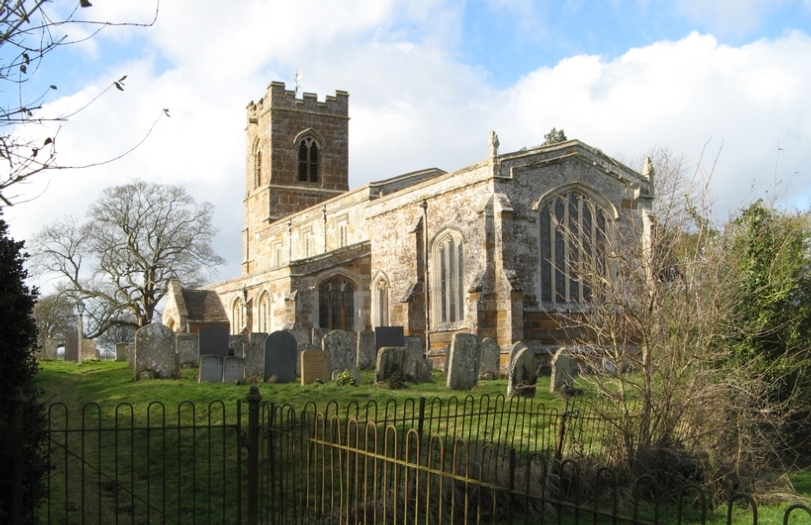St Mary the Virgin, Ayston, to become 345th addition to our collection
St Mary the Virgin, Ayston near Uppingham is to become the 345th church in our estate.
This delightful medieval church is set in the picturesque hamlet of Ayston and dates from the 12th century, though much of the present fabric is from the 13th century with some later additions. The church is comprised of a tower, nave, north and south aisles and chancel. The oldest part of the church is the west end of the nave followed by the north aisle. The south aisle and tower were added in the 14th century, and the chancel and south porch in 15th century. The furniture in the nave dates from circa 1800.
The church contains some early 15th century stained glass in the windows of the south aisle depicting the fragmented remains of a crucifixion scene, a crowned Virgin and Child and two bishops heads. Some early Dutch glass recovered from Ayston Hall in the 20th century is in the window next to the porch, the two roundels represent the Adoration of the Magi and the Presentation in the Temple.
The church has 4 bells the oldest of which are inscribed ‘Ambrose’ and the other ‘Ave Rex Gentis Anglorum’ which loosely translated means ‘Hail King of the English people’ and is part of a canticle which makes reference to St Edmund who was king of East Anglia and was killed by the Danes for refusing to give up his Christian faith and died circa.869. King Edmund was the original patron saint of England before being replaced by St George.
The church requires substantial repair work which will include conservation of the fragmentary remains of some medieval wall paintings.
We will hold a ‘meet the conservator day’ when the wall paintings are being conserved, as well as hosting other open days to meet the conservators and specialist craftsmen. We will list these on our events pages when further information is available.
Amongst the repairs scheduled for the first phase are the reroofing of the nave, chancel and south aisle and complete overhaul of the rainwater goods. The interior is quite damp so an investigatation into and improvements of the below ground drainage will be carried out. Masonry work is needed to various areas in particular to remove hard cement mortar which is damaging the stone followed by repointing in a lime mortar which will allow the building to breathe.
Dawn Whitton Conservation Manager states, “There will be some specialist conservation work to wall paintings and glazing and funds permitting bell specialists will carry out work to make the bells safe for ringing. The hope is that once the restoration work has been completed the medieval bells can once again hail our ancient patron saint St Edmund”
On completion all the pews and other furniture will be carefully treated with beeswax which will help lift the appearance of the interior. The cost of this first phase is expected to be in the region of £445,000. and a second phase of work is anticipated in the longer term after the bulding has dried out will cost approximately £40,000. These figures exclude the general running costs and annual maintenance of the building.
The church will be closed for 8 months while these repairs are carried out and will be opened to visitors in early spring 2015.
We will be looking for volunteers to get involved with keeping this delightful building open and used by both local people and visitors from further afield as a special piece of our heritage to enjoy.
Those interested in volunteering should contact David Adgar on 07733 108553 or [email protected].

